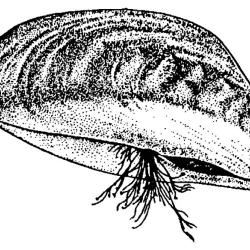Source Institutions
Source Institutions
Add to list Go to activity
Activity link broken? See if it's at the internet archive

In this activity, learners role-play the part of lake inhabitants and the aquatic exotics who displace the native species. Props are used to help demonstrate how aquatic exotic species enter a lake or river system, the negative effect they have on the native species, and things people can do to stop the spread of exotic species.
- 10 to 30 minutes
- 45 to 60 minutes
- $10 - $20 per group of students
- Ages 8 - 14
- Activity, Lesson/Lesson Plan, Simulation
- English
Quick Guide
Materials List (per group of students)
- Picture/drawing of several aquatic exotics—ruffe, zebra mussel, round goby, purple loosestrife, sea lamprey, Eurasian watermilfoil
- Bait bucket (available at bait stores)
- Bucket
- Seed package
- Two 6-foot lengths of rope
- Toy boat/trailer (or picture)
- Paper fish
- Twelve paper plates, six marked with "x" on both sides
Subjects
-
Earth and Space Science
-
Earth Structure
- Oceans and Water
-
Earth Structure
-
Life Sciences
-
Diversity of Life
- Animals
-
Ecology
- Ecosystems
- Populations
- Human Impact
-
Diversity of Life
-
The Nature of Science
-
Science and Society
- Risks and Benefits
-
Science and Society
Informal Categories
- Animals
- Nature and Environment
Audience
To use this activity, learners need to:
- see
- be mobile
- touch
Learning styles supported:
- Uses STEM to solve real-world problems
- Involves hands-on or lab activities
Other
Includes alignment to state and/or national standards:
Includes assesments for student learning:
This resource is part of:
Access Rights:
- Free access
By:
- COSEE Great Lakes
Rights:
- All rights reserved, University of Illinois, 2001
Funding Sources:
- National Science Foundation, 0827983
- National Science Foundation, 0828142
- National Science Foundation, 0827953
- NOAA National Sea Grant
- Office of Naval Research
- National Oceanic and Atmospheric Administration
